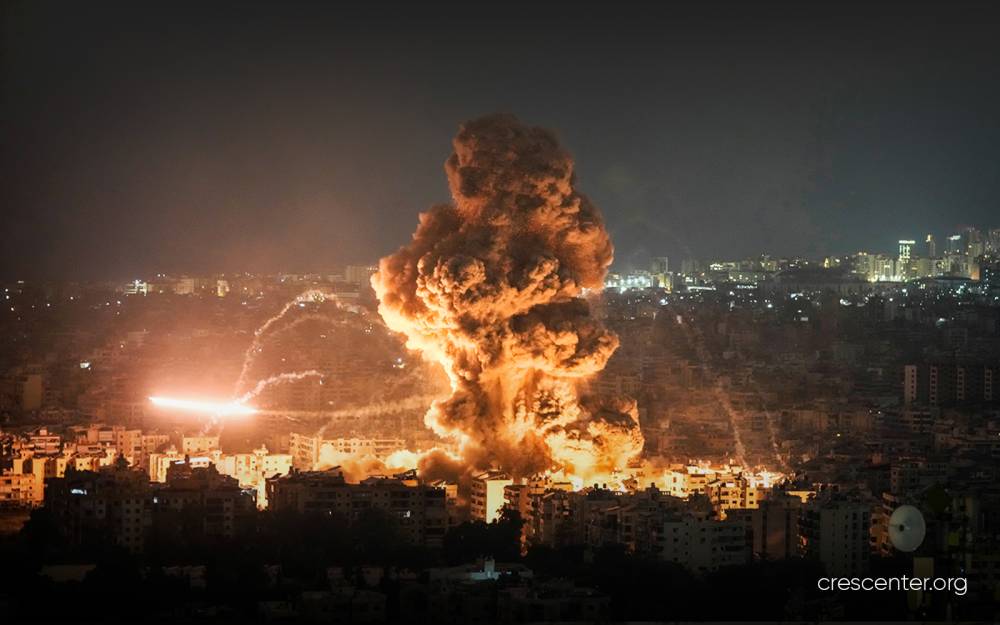The brief but high-stakes military confrontation between Iran and Israel in mid-2025 has emerged as a critical inflection point for the Middle East. Though the hostilities lasted less than two weeks, their implications continue to reshape regional alignments, strategic doctrines, and the architecture of global governance.
This paper analyzes the deeper geopolitical consequences of the conflict beyond ideological binaries. It focuses on the transformation of deterrence paradigms, the recalibration of regional diplomacy, and the erosion of traditional multilateral frameworks - all within a world increasingly defined by multipolar tensions and asymmetric competition.
Rethinking Deterrence: From Nuclear Red Lines to Symbolic Calculus
Iran’s measured and technologically coordinated response to Israel’s preemptive strike marked a shift in the operational logic of deterrence. Utilizing precision-guided missile systems, advanced cyber capabilities, and a strategy of calibrated escalation, Tehran signaled both preparedness and restraint. Crucially, it avoided crossing the threshold into total war.
For Israel, the initial strike, framed as a pre-emptive national security measure, sought to reassert its deterrent credibility and test Iran’s resolve. Yet the outcome revealed mutual recognition: direct conflict yielded diminishing returns. The traditional deterrence logic rooted in nuclear parity or overwhelming conventional firepower is giving way to a new grammarone characterized by controlled signaling, symbolic resilience, and agile de-escalation.
Regional Realignment: Strategic Autonomy Over Bloc Politics
The cautious neutrality adopted by major Arab states throughout the conflict revealed an evolving regional mindset. While nations such as Saudi Arabia and the UAE sustained discreet security channels with Israel, they refrained from overt endorsement. Simultaneously, Qatar and Oman advocated for balanced de-escalation, while Egypt and Jordan maintained a posture of restrained nonalignment.
This behavior suggests a broader strategic recalibration. Rather than aligning rigidly with external powers, regional actors increasingly seek to assert strategic autonomy. For several Persian Gulf states, Iran’s restrained but coherent military response reignited concerns over the long-term reliability of Western security guarantees.
The so-called “Axis of Resistance”comprising Hezbollah, Iraqi paramilitary groups, and Yemeni factions also displayed notable strategic patience. Their inactivity reflected a deliberate Iranian effort to manage escalation risk while preserving deterrence credibility across multiple fronts.
Global Paralysis and the Crisis of Multilateralism
The conflict unfolded amid growing skepticism toward international institutions, with the United Nations Security Council effectively paralyzed. Western governments issued formulaic statements in defense of Israel, while Russia and China called for mutual restraint and framed the Israeli offensive as a breach of Iranian sovereignty.
This diplomatic deadlock underscored the waning utility of Cold War-era mechanisms in addressing 21st-century conflicts. Across the Global South, the episode reinforced a perception that the so-called “rules-based order” functions selectively shielding Western-aligned states while imposing disproportionate scrutiny on others.
The asymmetry in legal accountability, where Israel frequently enjoys impunity while Iran faces extensive sanctions has deepened disillusionment with global governance. Such double standards are catalyzing a shift toward sovereign self-reliance and diversified diplomatic alignments among regional powers.
Multipolar Mediation: Support Without Intervention
Iran’s growing partnerships with BRICS nations, particularly Russia and China, offered critical non-military support during the conflict. While neither intervened directly, both provided diplomatic cover through carefully worded communiqués. China issued a reserved critique of Israel’s conduct, while Russia emphasized the imperatives of non-interference and regional stability.
These responses reflect a broader consensus among emerging powers: the Middle East must no longer serve as a proxy theater for Western geopolitical maneuvers. Within BRICS+ dialogues, there is increasing emphasis on developing alternative payment systems, resisting unilateral sanctions, and designing new regional security frameworks.
For Iran, the conflict accelerated its pivot toward these multipolar architectures not out of ideological affinity, but from the strategic necessity of insulating itself from Western pressure while asserting regional relevance.
Outlook and Strategic Implications
Three key lessons emerge from the conflict.
First, classical deterrence models premised on quantitative superiority are losing effectiveness. The current era favors psychological signaling, reputational endurance, and rapid responsiveness over sheer firepower.
Second, regional actors are increasingly decoupled from rigid alliance structures. The absence of a unified Arab response and the restraint of non-state proxies signal a shift toward individualized strategic calculus.
Third, the global diplomatic inertia in response to the conflict highlighted deeper structural divides. For many in the Global South, this reaffirmed the need for alternative institutional alignments capable of addressing security concerns outside decaying Western frameworks.
Evolving Threat Horizons: The Netanyahu Factor
Yet one crucial dynamic demands further attention: the growing conviction among Iranian analysts that Israel is likely to reinitiate hostilities. This forecast is grounded not only in military logic but in the volatile political landscape inside Israel. Prime Minister Benjamin Netanyahu, embroiled in legal controversies and confronted by mounting domestic opposition, faces increasing pressure to externalize internal crises.
Should Netanyahu agree to ceasefires on Israel’s multiple active fronts, he risks immediate political marginalization. Consequently, analysts suggest that further military escalation may serve a dual function: reviving deterrence narratives abroad while diverting attention from political vulnerabilities at home.
Moreover, Israel’s most recent attack failed to meet its strategic objectives, prompting assessments in Tehran that another confrontation is not only possible but probable. However, the conflict has altered Iran’s strategic posture. The illusion of perpetual Israeli dominance in the Middle East has eroded. Going forward, Iran is expected to respond with greater strategic foresight, enhanced operational creativity, and a sharpened sense of geopolitical timing.
The conflict, in this sense, was not an end but a prelude.
Conclusion
The Iran–Israel conflict represents a new phase in regional and global strategic evolution. It disrupted outdated deterrence doctrines, exposed fissures in international governance, and signaled the rise of alternative security configurations. Most significantly, it revealed that the Middle East is no longer a passive stage in global power struggles it is now an active arena of multipolar agency.
As the post-conflict landscape takes shape, Iran’s measured conduct, strategic recalibration, and diplomatic adaptability are positioning it as a central force in shaping the region’s future equilibrium.
P. Salehi
